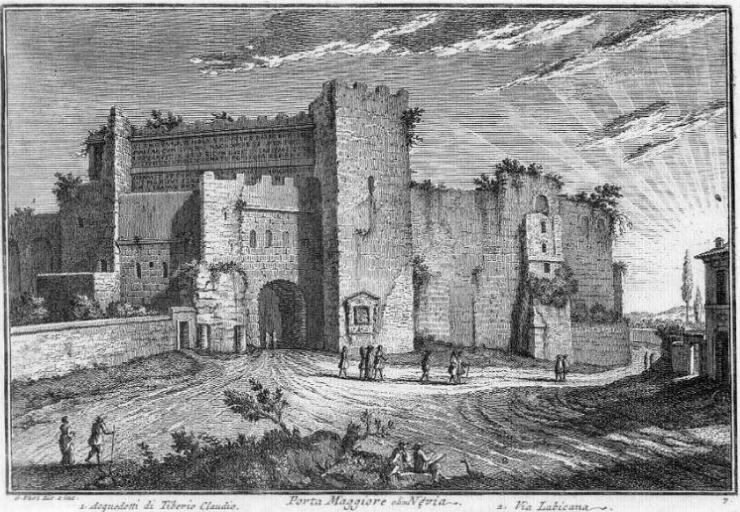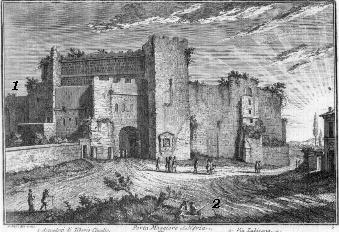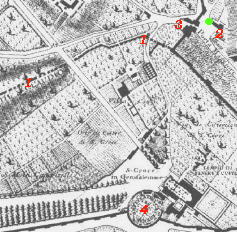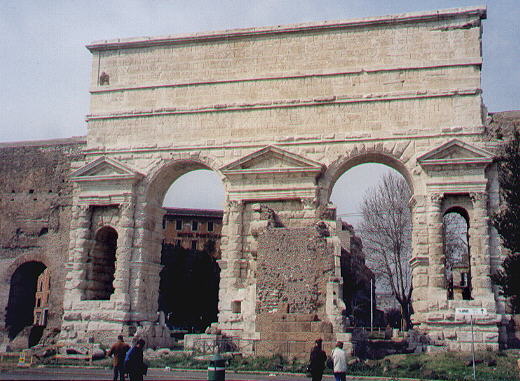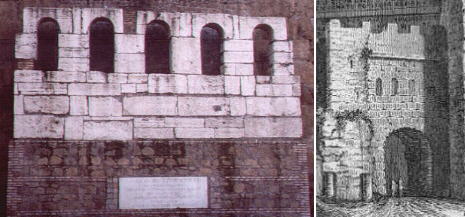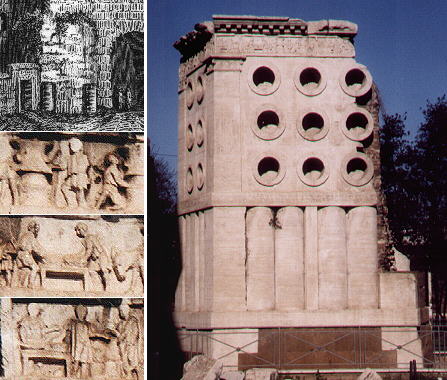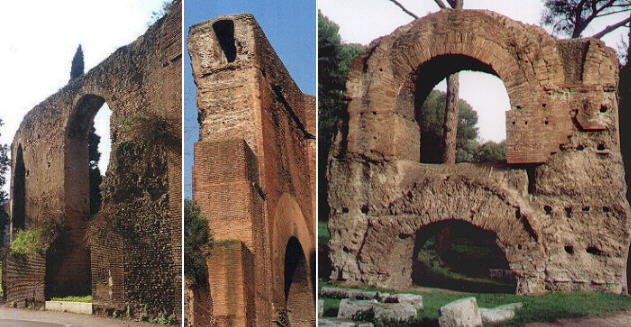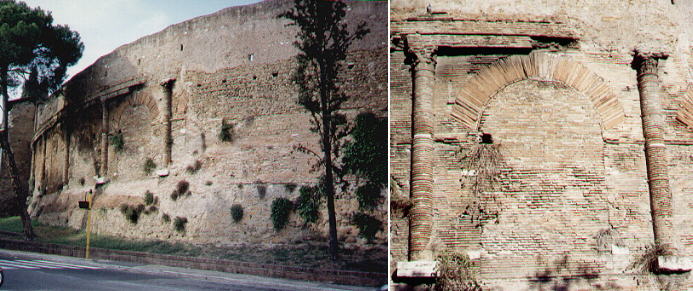  Porta Maggiore (Book 1) (Map A3) (Day 2) (Rione Monti) In this page: The plate by Giuseppe Vasi Today's view Tomb of Marcus Virgilius Eurysaces Acqua Claudia The walls between Porta Maggiore e Porta S. Giovanni (including Anfiteatro Castrense) The Plate (No. 7)
The plate shows the fortification built by the Colonna family in the middle ages around the gate which was originally a sort of triumphal arch built by Emperor Claudius in 52 A.D. to celebrate the entrance into Rome of two aqueducts the Aqua Claudia and the Anio Novus. Emperor Aurelianus incorporated the arch and a section of the aqueducts into the new walls. The gate was actually two gates in the sense that two roads diverged hence, Via Labicana and Via Prenestina. The view is taken from the green dot in the small 1748 map here below. In the description below the plate Vasi made reference to: 1) Aqueducts of Claudius; 2) Via Labicana. The small map shows also: 3) Porta Maggiore; 4) Anfiteatro Castrense.
The original aqueduct monument has been restored in full and all medieval additions destroyed. Traffic goes through lateral breaches in the walls. However the upper part of the gate (image below), built by the emperors Arcadius and Onorius at the beginning of the Vth century, was relocated to the left side of Porta Maggiore. You may wish to follow the steps of Ferdinand Gregorovius who started from here his walks in the Roman countryside.
The Baker's Tomb
The plate shows between the two entrances a small building. The restoration has isolated a tomb,
the tomb of the baker Marcus Virgilius Eurysaces. He was so proud of
being a baker that he celebrated bakery in his tomb. It is decorated
in imitation of grain-measures and stock-holes and the reliefs represent grinding, baking and other parts of his trade.
The arches of the aqueduct can be seen at many points between Porta Maggiore and the Palatine. The first two pictures above relate to the section
between Porta Maggiore and S. Giovanni. The third one was taken on the Palatine. You can see more of this
aqueduct while making a walk to Porta Furba.
The only interesting site of this part of the walls is the Amphiteatrum Castrense an oval
brick building used for training purposes by the Roman army and which was
incorporated into the walls. The decorations too are made of brick.
Next plate in Book 1: Porta S. Giovanni Next step in Day 2 itinerary: Tempio di Minerva Medica Next step in your tour of Rione Monti: Chiesa di S. Croce in Gerusalemme  or to Book 1 or to
The Coats of Arms of the Popes or
to My Home Page on Baroque Rome or to
My Home Page on Rome in the footsteps of an XVIIIth century traveller or to Book 1 or to
The Coats of Arms of the Popes or
to My Home Page on Baroque Rome or to
My Home Page on Rome in the footsteps of an XVIIIth century traveller
|
All images © 1999 - 2002 by Roberto Piperno. Write to romapip@quipo.it
